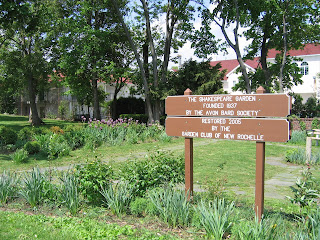Poliomyelitis, or polio, also known as "infantile paralysis" is a contagious viral disease that destroys motor neurons that control muscles. Paralytic polio is life-threatening, and survivors often experience lifelong disabilities. The 1916 polio epidemic was the most devastating in the history of the disease, not to be surpassed until the 1950s in the U.S. In June of 1916, polio cases appeared in Brooklyn that led to an epidemic encompassing all five boroughs of New York City, causing widespread panic and flight from the city. Polio cases quickly spread to adjacent areas in Conneticut, New Jersey and Pennsylvania. One affected city was New Rochelle.
Public health officials rushed to quarantine the contagious and quell the epidemic, but hundreds of new cases were reported weekly in communities that summer. In New York City alone, there were over 9,000 cases and 2,343 deaths. In New Rochelle, health officials reported ten cases in July clustered in a neighborhood downtown and the Pelham border; all were children under the age of three. The Board of Health placed the neighborhood under quarantine and began to build structures adjacent to the hospital for the polio cases. When the epidemic peaked in August, there were 86 hospital cases. Orders were issued for mosquito and fly abatement, but to no avail, for these where not the vectors of poliovirus. Patients were isolated; families were quarantined; and public gatherings of children were forbidden. New Rochelle schools delayed opening until October when the epidemic had passed. At that point the Board of Health established a fund to provide aftercare treatment and orthopedic braces for disabled children, and the New Rochelle Hospital established a regular polio clinic for hundreds of survivors.
It is instructive to remember this history in light of the current COVID-19 pandemic. The current situation is shocking and devastating, but medical science and public health will ultimately prevail. It is also important to remember the most famous polio survivor, a person who became President of the United States - Franklin D. Roosevelt. FDR is the only elected leader in the history of the world who could not walk or stand on his own. His disability was caused by paralytic polio. FDR's struggle was arduous, but he set in motion the research that ultimately led to the Salk and Sabin polio vaccines. A paraplegic for life, FDR once said about his struggle to walk again, "I once spent two years in bed trying to move my big toe. After that everything else seems easy."
April 21, 2020 / David Rose / New Rochelle Public Library Archives
































